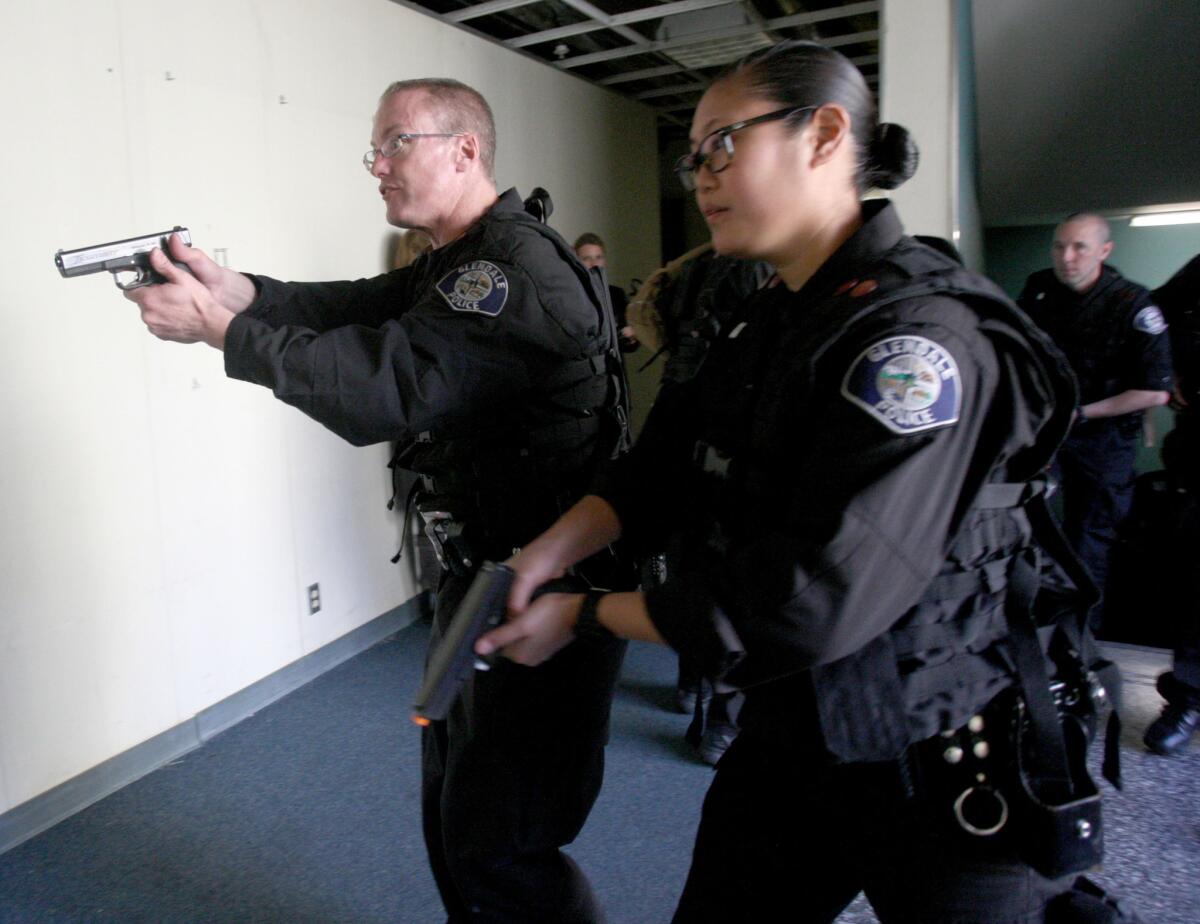Glendale police undergo training for active-shooter situations

Glendale Police officers participate in live tactical medical training with the help of Hawthorne Police Department officers at the old Glendale Police Station building on Wednesday.
Two loud shots rang out from the former Glendale police station Wednesday afternoon before a handful of armed officers rushed up the stairs, guns drawn.
“Help, I’m shot,” cried a police officer, simulating a victim. “Hurry, I’m up here, help me out.”
While some officers went off to find the shooter, others dropped to the floor to render medical aid as fake blood spurted from a three-liter blood bag.
The exercise was part of the Glendale police agency’s push to train officers on delivering medical aid in active-shooter situations, when it’s too dangerous for paramedics to enter a scene.
“You’re OK, buddy. Stay with us,” one responding officer said, as blood pooled on the floor.
By the time officers sealed the wound, there was about half a liter of blood left in the bag.
That victim lived.
“If you lose all three, you’re not coming back from that,” said Lt. Eric Lane, a training instructor with the Hawthorne Police Department, which has been offering tactical medical training for about eight years.
Roughly 30 Glendale officers participated in the three-day training program this week, though the goal is to eventually train the entire force.
With the training under its belt, the Glendale agency plans to equip every police car with newly purchased medical kits, which include tourniquets, gauze, scissors and other first-aid supplies, for police to use when responding to emergencies.
A $43,000 grant from the Department of Homeland Security funded both the training program — the first of its kind in Glendale — and the medical kits, officials said.
“You only have a couple minutes for someone to bleed out,” said Glendale Police Officer Javier Michel, who helped organize the training at the former police station, located on Isabel Street across from the current Glendale police station.
It may take up to 20 minutes for police to make sure the scene is safe before allowing inside firefighters and paramedics, who aren’t wearing protective gear. In that time, a lot of lives can be saved, Michel said.
“This is just geared toward the first couple minutes that matter the most,” said Joe Nakagawa, a physician and director of tactical medicine at the Hawthorne police agency. “For the longest time, cops were given a dangerous job to do, and not given tools to help themselves or their partners when they get hurt, and we’re trying to change that.”
--
Alene Tchekmedyian, alene.tchekmedyian@latimes.com
Twitter: @atchek
